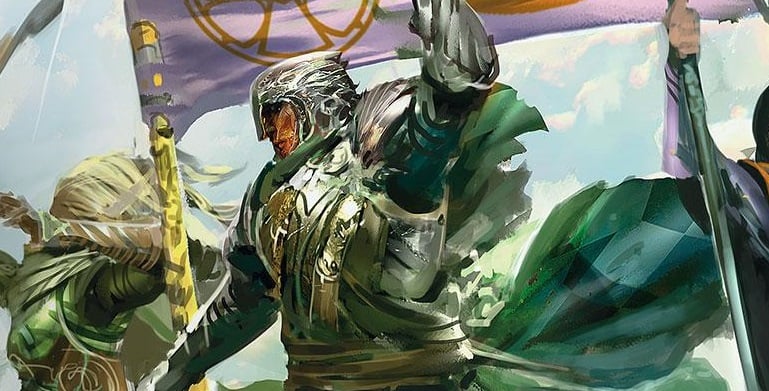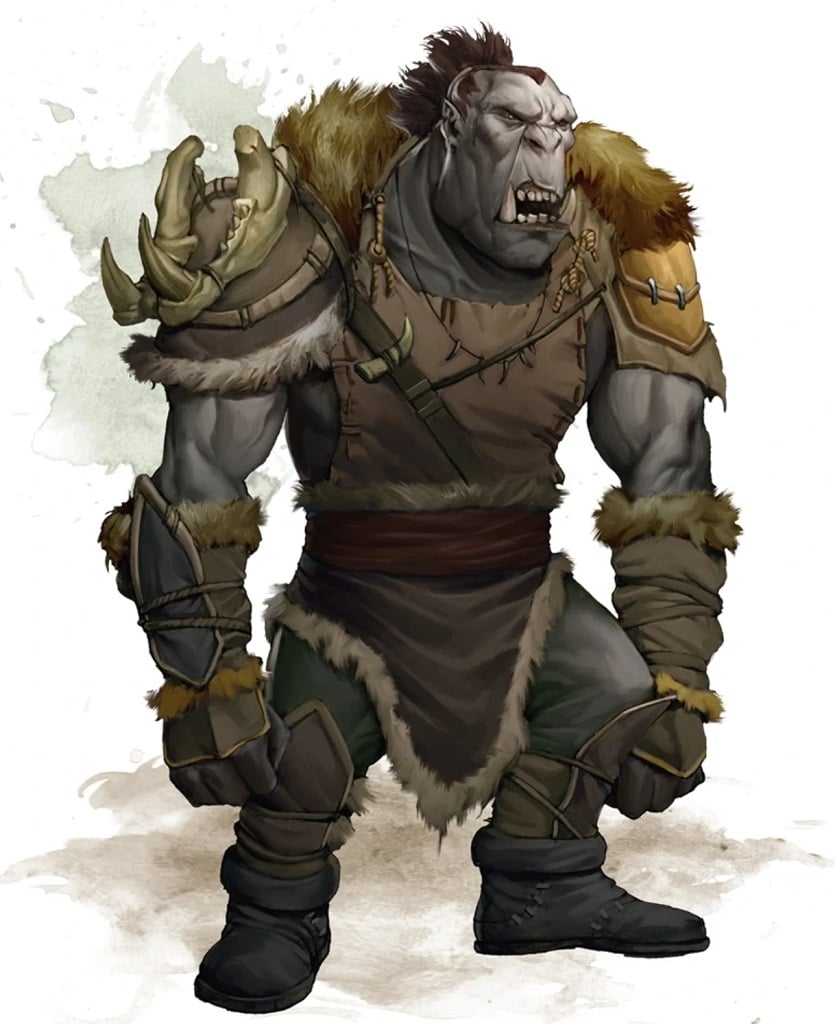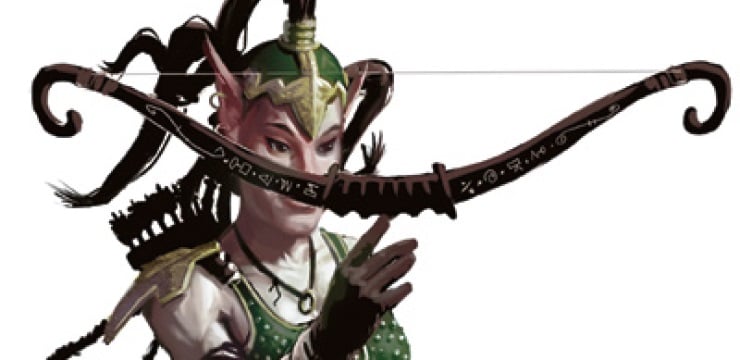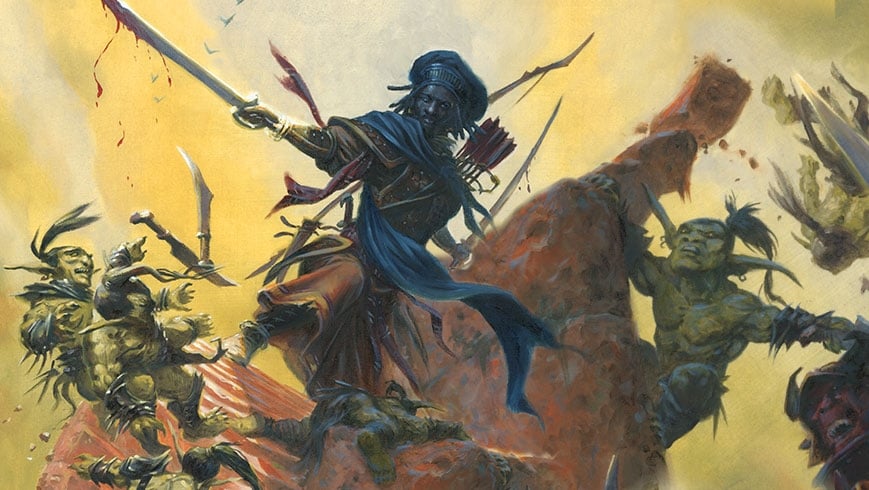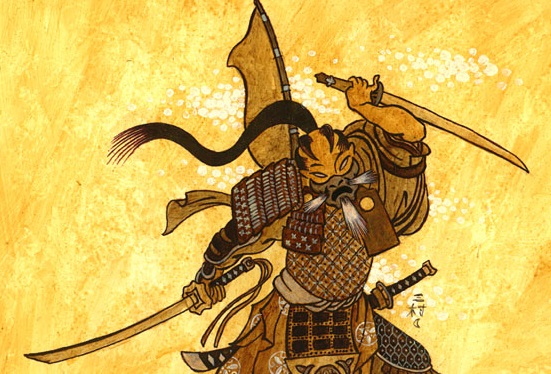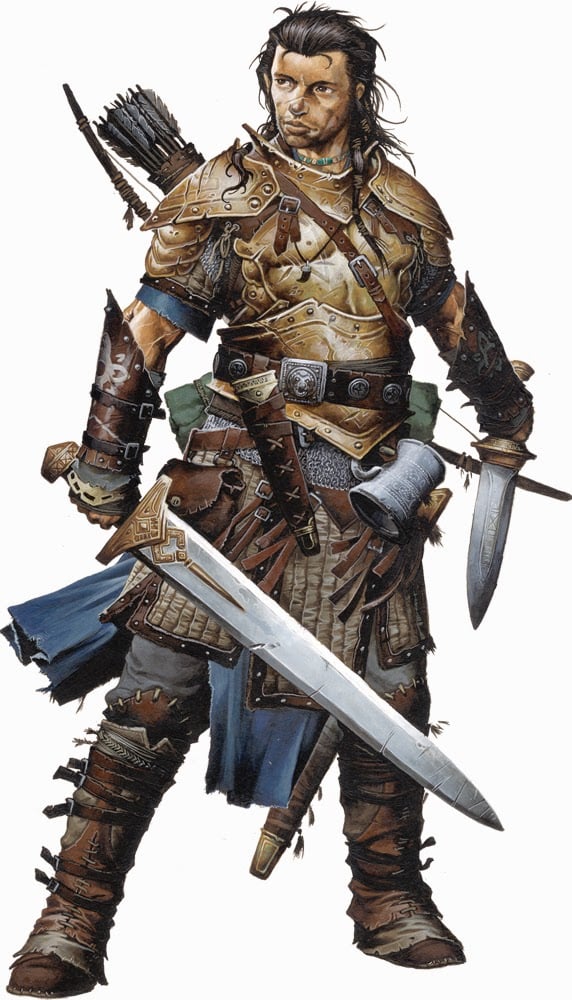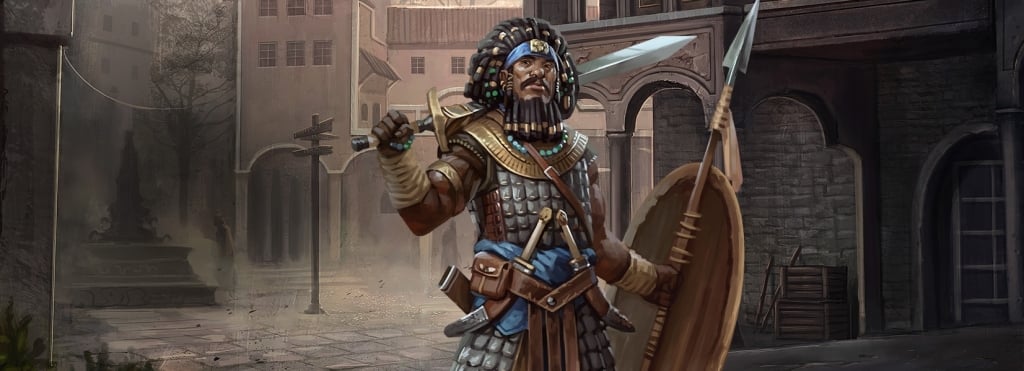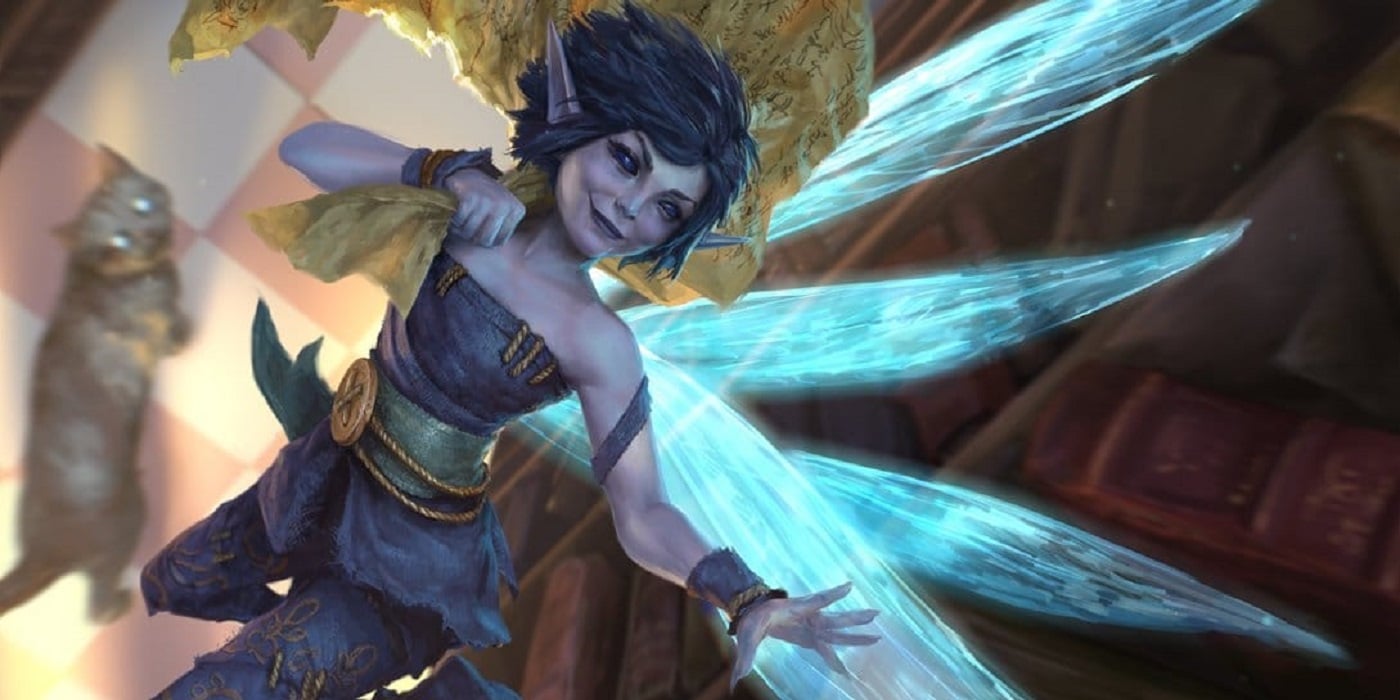D&D 5e Guide – How to Play a Fighter
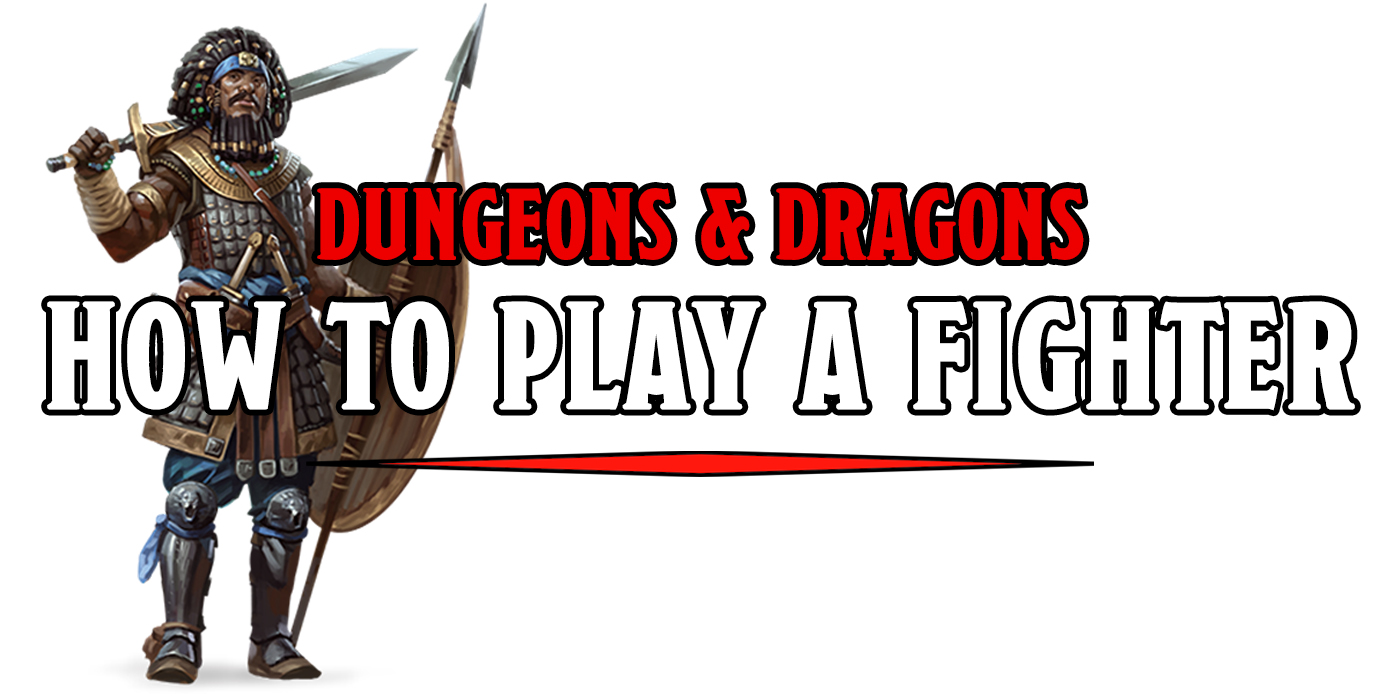

5E Fighters can fit into just about any party. Charging into enemies, protecting their allies–Fighters do it all. Here’s how to play one.
There’s a reason that 5E Fighters are the most popular class in D&D, and it all comes down to playability. In terms of both mechanics and story, Fighters are the easiest class to understand. Even with the most basic understanding of D&D, it’s easy to explain a 5E Fighter.
They’re the sword half of sword and sorcery. They’re the plate in the mail, the knights, the lancers, warriors who need food badly. As long as there has been an adventure, there have been people who hit things with swords (or other weapons).
They’re the easiest class for a new player to pick up but rewarding enough for even a seasoned veteran. A Fighter can easily be an everyman. Someone who isn’t chosen by fate or studied ancient secrets. They’re a person who picked up a sword because they had to. And the class is pretty accessible.
Jump To…
An Intro to 5E Fighters
Fighters have a lot going for them. They give you the quickest route to picking up dice and playing. And they’re one of the most forgiving classes at 1st level. They have a lot of hit points, they can wear any armor and use any weapon they want. All you really have to do is make sure you’re in range of an enemy and roll a d20, and you’ve got it made.
But the real secret to fighters is how flexible they are. The Fighter class, baseline, is pretty simple. But you can pick subclasses that give you more complex options. Or you can double down on just rolling the d20 and seeing what happens. You’ll have good hit points and armor no matter what, and with access to the most Feats, you can expand your role pretty handily.
Fighting Styles
When you play a Fighter, the first choice you have is your signature fighting style, which determines what you’re best at. Not every choice is equal, but here are your options and what they’ll help you do. Choices marked with an asterisk are top-tier choices:
- Archery * – Easily one of the best Fighting styles in 5E. This helps you hit better right from 1st level, and it mitigates the penalty for something like Sharpshooter. If you want to be a ranged Fighter, this is the way to go.
- Blind Fighting – You gain Blindsight within 10 feet, but this is a situational Fighting style at best. Not great for your first choice.
- Defense – A +1 AC is hard to argue with. It doesn’t give you a bonus to damage, but it will come up all the time.
- Dueling * – If you’re using a 1-handed weapon, this is the Fighting style for you. 2 damage makes a huge difference, especially on average. Works with a shield too, so you can stay protected and still deal damage
- Interception – An interesting one defensive. This reduces the damage of an incoming attack on one of your allies. It is a great option if you’re trying to protect an ally with low AC.
- Protection – This lets you use your reaction to impose disadvantage on an adjacent ally. Which is a great way to protect someone with a higher AC.
- Superior Technique – This Fighting Style gives you Combat Maneuvers early on. It’s an okay alternative to Martial Adept. Not a bad first choice, but some of the others might give you better options.
- Thrown Weapon Fighting * – A Fighting Style that makes thrown weapons actually work in D&D 5E. This is great if you want to make a Fighter who hurls javelins or axes at range. It combos well with Archery if you use ranged weapons like Darts, or if you use Melee weapons with light and thrown, like handaxes, you can benefit from the Two-Weapon Fighting style.
- Two-Weapon Fighting – It’s not a great option for Fighters in 5E. But Two-weapon fighting is looking real good in One D&D. This style helps you get more damage, but often at the cost of your bonus action. Skip for now.
- Unarmed Fighting – A great option for people wanting to fight with Unarmed strikes. But if you don’t want that, there’s not a whole lot this gives you otherwise.
The other thing to know is that you can recover hit points even in the middle of a fight. As a Fighter, you can tough out almost any combat with your second wind, this lets you regain 1d10 + your Fighter level hit points, and at low levels, that’s quite a bit.
At 2nd level, though, your Fighter will really blossom with action surge. This lets you take another action, which can be used to attack or run further, or take any other action, even casting another spell. And you can do it once per rest, just like Second Wind. Between Second Wind and Action Surge, your Fighter will shine in any fight. Everything else just lets you do what you already do but better, whether it’s making extra attacks when you take an attack action or rerolling saving throws. The secret to 5E Fighters is you hit hard and often and can take a beating.
And with Action Surge and Second Wind ensuring that they have the tools to keep themselves in the fight (once per rest at any rate), they can be bastions of endurance that carry the party as encounter after encounter heads their way. So how do 5E Fighters differentiate themselves? The answer is in Feats and Subclasses.
What 5E Fighter Subclass to Pick
5E Fighters’ martial archetypes help them fit a specific role in the party.
Arcane Archers are Fighters who mix magic and arrows (and both in a decent amount). This subclass makes you much more short rest dependent than others – not only do you get back second wind and action surge, but you gain back both uses of your Arcane Shot. This is good – because the big defining feature of the class is Arcane Shot (which allows you to add extra damage and magic to your attacks) up to twice per encounter and then you’re spent.
`After that, sure you have a magic bow and the ability to keep your attack targeting opponents until it hits one–but it’s the Arcane Shots that make you stand out. So it’s kind of a shame how quickly that runs out. Nevertheless, this class is great for battlefield control and dealing with a powerful enemy.
Pick this subclass if you want to have a few powerful attacks that help to end a fight quickly.
Battlemasters are pretty great, focusing more on versatility. They have the Superiority Dice and the Combat maneuvers which let them do extra damage. And you’re able to pick from a list of maneuvers that help them accomplish a variety of tasks on the battlefield.
They are consummate brawlers, but can also focus a little on battlefield control or party support. The 5E Fighter that takes Commander’s Strike, Rally, and Goading Attack is any party’s best friend. And that’s only three of your eventual nine maneuvers.
Pick this subclass if you want to fill a variety of roles in your party – especially if with your feats you’re gearing up to be the party’s leader.
Fighters who become Cavaliers are armored and mounted knights, although the horse is only one part of this subclass. Cavaliers are all about resilience, whether protecting themselves, their mounts, or other people from attacks. They are great at holding enemy attention – their offensive abilities are alright, but where they really shine is in protecting the party with their reactions. As a Cavalier, you’ll have to be careful to figure out which reaction to use and when.
Pick this subclass if you want to be in the center of the party. You’ll be fighting hard to keep your friends safe.
Champion Fighters are all about indomitability. They’re fairly straightforward, emphasizing the Fighter’s natural endurance and brawling ability, making them able to hold the line in just about any combat. Champions are the most efficient 5E Fighters there are. They don’t have any other powers that run out. And they get constant abilities that help them keep fighting better and harder than the other Fighters.
Pick this subclass if you want to fight and fight and fight without ever really stopping. If you want to be indomitable and never worry about what your next action is.
Eldritch Knights are, as the name implies, spellcasters. They’re a perfect blend for any gish build you could possibly want to make. We haven’t seen too many of these that are Fighters and spellcasters combined into one. But the Eldritch Knight does this with aplomb.
If you take this class, you’ll be fighting with swords and magic in equal measure. There’s a lot to keep in mind, like your action and bonus action economy. But you get some pretty powerful tools. You can use them to make sure your enemies are affected by your spells. They’ll be damaged all to heck by the end of it!
Pick this subclass if you want to blend martial mastery and magic. You can do a lot of damage and keep yourself fighting better, faster, harder.
Psychic Warriors channel the power of their minds. This is a new, psionic type introduced in Tasha’s Cauldron. It gives you extra powers somewhere between an Eldritch Knight and a Battlemaster Fighter. You’ll be able to deal psychic damage and gain some powerful movement options.
Pick this subclass if you want to move around the battlefield and hit things hard and fast.
Speaking of Tasha’s Cauldron, Rune Knights are an interesting option. They can draw upon special runes to transform themselves for the duration of a fight. With different options to pick from, you can really go into your ultra-powerup mode and dish out damage.
Pick this subclass if you want to have a power-up sequence in a fight. It’s also great if you’d like to choose what you bring to each fight on the fly.
Samurai is perhaps my personal favorite subclass. They combine the resilience of the Champion with the brawling abilities of like a Barbarian. This class is about what I like to call offensive resilience. They have buffs that grant themselves temporary hit points but also make attacking better.
Their fighting spirit ability also sets up the ability to make even more attacks come at 15th level. It gives them the most attacks per round, especially combined with Action Surge and/or Haste.
Pick this class if you want to make the most out of a single moment in a fight.
What 5E Fighter Feats To Pick
One of the biggest advantages that 5E Fighters have, is they can pick more feats than any other class. What feats should the pick though? By and large, they get the most out of Feats. The right Feats can complement a Fighter and take them to the next level. Here’s a look at some of the most popular feats for Fighters.
- Crossbow Expert – A popular option for ranged combat. You make a ton of attacks and can do so even in melee. Bring a hand crossbow and take Sharpshooter for maximum benefit.
- Defensive Duelist – If you’re a Dexterity-based Fighter and don’t have combat maneuvers, this Feat is a godsend. Battle Masters have better options with Parry and Riposte though.
- Great Weapon Master – Absolutely essential for anyone wanting to do a ton of melee damage. You only need a heavy weapon to get the +10 damage bonus. So this works with many Polearms too.
- Heavy Armor Master – You’re already hard to hit. Now you take less damage from pretty much every attack.
- Martial Adept – Battle Master Fighters are limited by the number of superiority dice they have and the maneuvers they know. This feat is essential for them and great on any other Fighter.
- Polearm Master – One of the best feats in the game, this gives you an extra attack and lets you make opportunity attacks frequently. If you want to tank, this is the first step.
- Sharpshooter – This does a lot of things, but the most important one is it lets you shoot at -5 to hit, but +10 to damage. Fighters get the most out of this one because they make more attacks than anyone else.
- Sentinel – The second half of the feat combo for anyone wanting to be a tank. This stops enemies in their tracks.
- War Caster – Are you an Eldritch Knight? You need this feat. This lets you use your reaction to do one of the combat cantrips.
How to 5E Fighter – Common Roles
Fighters often have great flexibility and can fill many roles in the party. We’ll look at two of the most common roles they fill.
First up, how to tank: A tank is the party’s defender. These Fighters protect the backline/weaker members of the party by making sure that the enemies are focused on attacking them or that they don’t have the option of getting there.
Any subclass will work for this. But Battle Master and Cavalier are the best options. Cavalier gives you the ability to Mark your foes. Marked enemies will have a difficult time attacking anyone who isn’t you, and you get to attack them if they do.
Battle Masters have options they can pull out if they want to protect a party member. Maneuvers can help them keep enemies at bay.
But even if you don’t pick one of those classes, being a Defender is easy. Take one of the Defensive fighting styles, like Protector or Interception, and pick up Sentinel and Polearm Master. The PAM/Sentinel combo makes it easy for you to control the battlefield. Anyone passing near your reach (which is 10 feet with a good polearm) is subject to an attack of opportunity that, if it hits, reduces their speed to 0 and stops them in their tracks. Can’t get to the Wizard if their speed is 0. So they may as well attack you.
The other thing Fighters are great at is dealing damage. If you want to do that? Great Weapon Master is one way to go. Or you can take Sword and Shield and duelist fighting style, and fall only slightly behind the curve. Battle Master is good here, but Echo Knights, Eldritch Knights, Psi Warriors, and Samurai all excel here.
Pick feats that supplement your attacks. Two weapon fighting or Great Weapon Master or Martial Adept will help you get the most damage behind any attack. Aside from that, make sure you’re always in someone’s face and you’re good to go.
Anyway, that’s the 5E Fighter. The anchor for many a party, and your fighting friend who’s fun to be with.
Happy adventuring!

